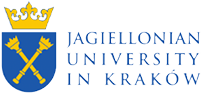Casuistry and Legislative Power: The Medieval Origins of the Renewal of Church Law
This chapter examines the medieval origins of the renewal of ecclesiastical law, focusing on the casuistic nature of papal decretals and their evolution into general legal norms. It explores the development of the Corpus Iuris Canonici, the role of canonists, and the integration of these legal texts into the broader framework of medieval legal culture.
Le droit canonique et la culture juridique occidentale
(Canon Law and Western Legal Culture)
The chapter begins by situating canon law as a fundamental element of European legal and cultural development. The coexistence of canon law (ius canonicum), Roman civil law (ius civile), and local legal traditions (iura propria) from the 12th century contributed to the creation of the ius commune, which governed Europe until the modern codifications of national laws. Despite the schisms caused by the Reformation, the Roman Church’s canon law remained integral to the legal framework of Western Europe, influencing values, institutions, and legal mechanisms.
Les Corpora iuris de l’Église et de l’Empire
(The Legal Corpora of the Church and the Empire)
This section compares the development of the Corpus Iuris Civilis (Roman civil law) and the Corpus Iuris Canonici (canon law). While Justinian’s Corpus Iuris Civilis was a unified imperial codification promulgated in the 6th century, the Corpus Iuris Canonici emerged gradually between the 12th and 15th centuries, encompassing a heterogeneous collection of ecclesiastical sources. Papal reforms, particularly the post-Tridentine decrees, further shaped canon law by introducing new legal frameworks and addressing the challenges posed by the Protestant Reformation.
Les décrétales et le ius novum
(Decretals and the Ius Novum)
The decretals, papal letters addressing specific cases or questions, played a pivotal role in developing new law (ius novum). Initially focused on resolving particular disputes, these decretals evolved into sources of general legal norms. Canonists expanded their casuistic origins into universal principles, integrating them with the ius vetus (ancient law) found in Gratian’s Decretum. The systematic organization of decretals in collections like the Compilatio Tertia and Gregory IX’s Liber Extra standardized their application in courts and universities.
Autour de l’authenticité des décrétales extravagantes
(On the Authenticity of Decretales Extravagantes)
Decretales Extravagantes, which circulated outside the official collections, presented challenges in determining their authenticity. Innocent III’s decretal Pastoralis officii diligentia addressed this issue, establishing the principle that conformity with the ius commune could validate texts of questionable origin. This principle underpinned the medieval Church’s approach to regulating the authenticity of legal documents, particularly in combating forgery.
Les extravagantes entre le Moyen Âge et l’époque moderne
(The Extravagantes Between the Middle Ages and Modernity)
The transition from manuscript to print during the late Middle Ages stabilized the transmission of Decretales Extravagantes. These texts, along with regulae cancellariae (chancery rules) and decisiones rotae (judgments of the Roman Rota), became integral components of the Church’s legal order, even though their unofficial circulation raised questions about their legal status. The systematic organization of the normative texts and their publication in incunables during the 15th century marked a significant step in their integration into canonical tradition.
Conclusion
The chapter highlights the casuistic origins of papal decretals and their transformation into general legal principles, illustrating the dynamic interplay between specific cases and overarching norms in canon law. By integrating disparate legal sources into the Corpus Iuris Canonici, medieval canonists laid the groundwork for a unified legal culture that shaped ecclesiastical and secular jurisprudence.







